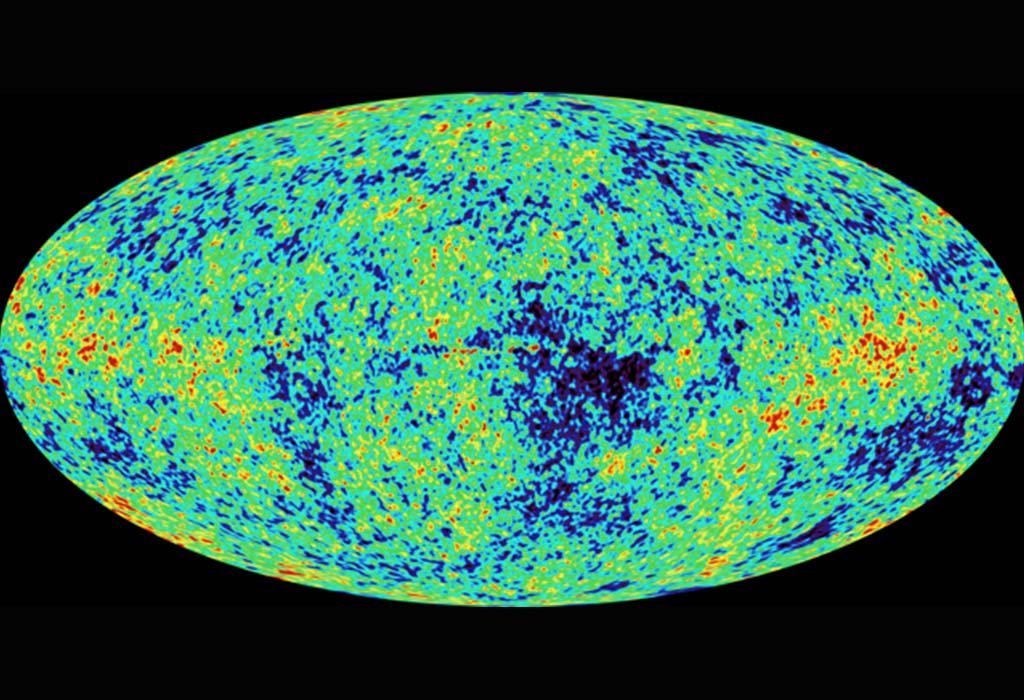Cosmic microwave background
The cosmic microwave background (CMB) is a whisper of radiation that reaches detectors on Earth from all over the sky. When the CMB was set loose, only 400,000 years after the Big Bang, the universe was very hot and dense and the CMB had the same amount of energy as that produced by a light bulb. Now, nearly 14 billion years later, the universe has expanded and cooled so much that the CMB has mostly been reduced to a gentle wash of microwaves, not unlike those that are generated in your microwave oven.
The CMB is almost, but not exactly, the same whichever direction we look. Pictures constructed from satellite data show very subtle variations in the strength of the microwave signal. These hot spots and cold spots, which differ in temperature by only millionths of a degree, can be interpreted as very slight differences in the crowding together of matter in the young universe. Hot spots have slightly more matter than average; cold spots a bit less.

These temperature differences seem to have a certain regularity, with peaks and troughs recurring in a detectable rhythm. The explanation for these fluctuations is that they come from a sound wave that echoed around the early universe. Back then, matter had not yet formed into atoms. Instead we had a plasma of protons, neutrons and related particles, collectively called baryons. The sound waves left their imprint in the distribution of this early matter. So, we can talk about 'acoustic baryon waves' or more informally 'baryonic wiggles'.
By examining the imprint of these wiggles, astronomers can build a template for how the modern universe was formed, with the hot spots becoming the seeds of super-clusters of galaxies and the cold spots giving rise to relative voids. The distribution of galaxies today can be compared with patterns in the CMB, and the difference between the two patterns should depend how dark energy has affected the expansion of the universe.





